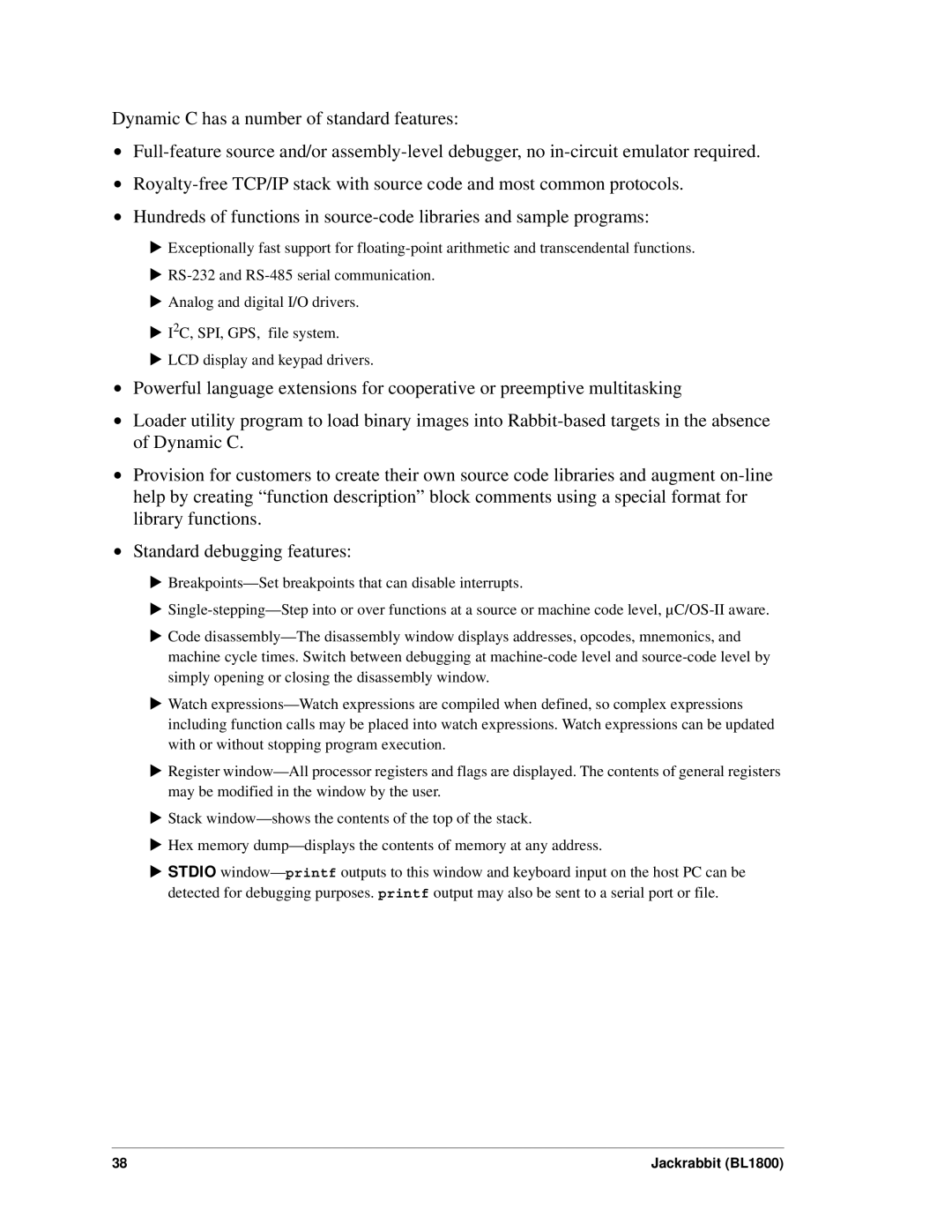Dynamic C has a number of standard features:
•Full-feature source and/or assembly-level debugger, no in-circuit emulator required.
•Royalty-free TCP/IP stack with source code and most common protocols.
•Hundreds of functions in source-code libraries and sample programs:
XExceptionally fast support for floating-point arithmetic and transcendental functions.
XRS-232 and RS-485 serial communication.
XAnalog and digital I/O drivers.
XI2C, SPI, GPS, file system.
XLCD display and keypad drivers.
•Powerful language extensions for cooperative or preemptive multitasking
•Loader utility program to load binary images into Rabbit-based targets in the absence of Dynamic C.
•Provision for customers to create their own source code libraries and augment on-line help by creating “function description” block comments using a special format for library functions.
•Standard debugging features:
XBreakpoints—Set breakpoints that can disable interrupts.
XSingle-stepping—Step into or over functions at a source or machine code level, µC/OS-II aware.
XCode disassembly—The disassembly window displays addresses, opcodes, mnemonics, and machine cycle times. Switch between debugging at machine-code level and source-code level by simply opening or closing the disassembly window.
XWatch expressions—Watch expressions are compiled when defined, so complex expressions including function calls may be placed into watch expressions. Watch expressions can be updated with or without stopping program execution.
XRegister window—All processor registers and flags are displayed. The contents of general registers may be modified in the window by the user.
XStack window—shows the contents of the top of the stack.
XHex memory dump—displays the contents of memory at any address.
XSTDIO window—printfoutputs to this window and keyboard input on the host PC can be detected for debugging purposes. printf output may also be sent to a serial port or file.
